Five Biggest Furniture Painting Mistakes
Painting furniture is a really fun hobby! Especially when you can take a piece of furniture from trash and make it into treasure. But you need to know these five biggest furniture painting mistakes (and how to fix them) before taking on a project.
Get more tips, tricks, and furniture makeover ideas here!
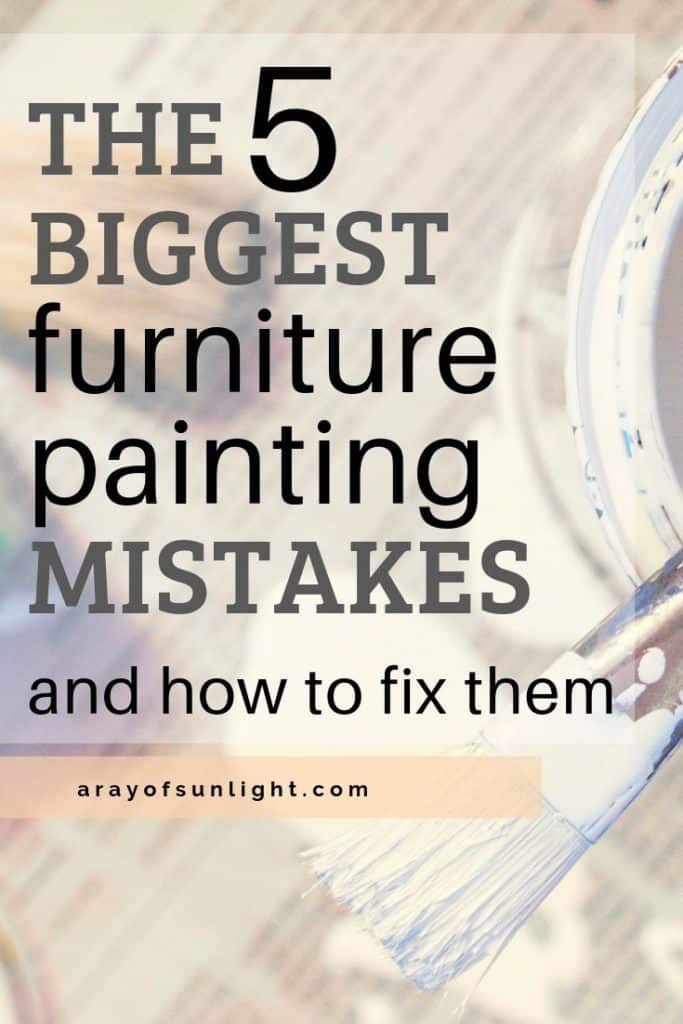
I have been painting furniture to sell since 2014. In that time I have seen some pretty big mistakes. I even made them myself in the beginning!
I want to share them with you, along with helpful tips on how to avoid making the mistakes, so you don’t make the same mistakes!
But don’t worry, if you make some of these, I’m also sharing how to fix painting mistakes!
As an Amazon Associate, I earn from qualifying purchases. I also may earn from other qualifying purchases with other companies or get free product to review and use. All opinions are my own.
5) Not Repairing Major Damage Before Painting
If your furniture has major damage on it like a large hole, missing parts of a leg, broken drawers, etc, it is best to fix those before painting.
I know some like to leave a little bit of damage, but the big things should be taken care of before painting.
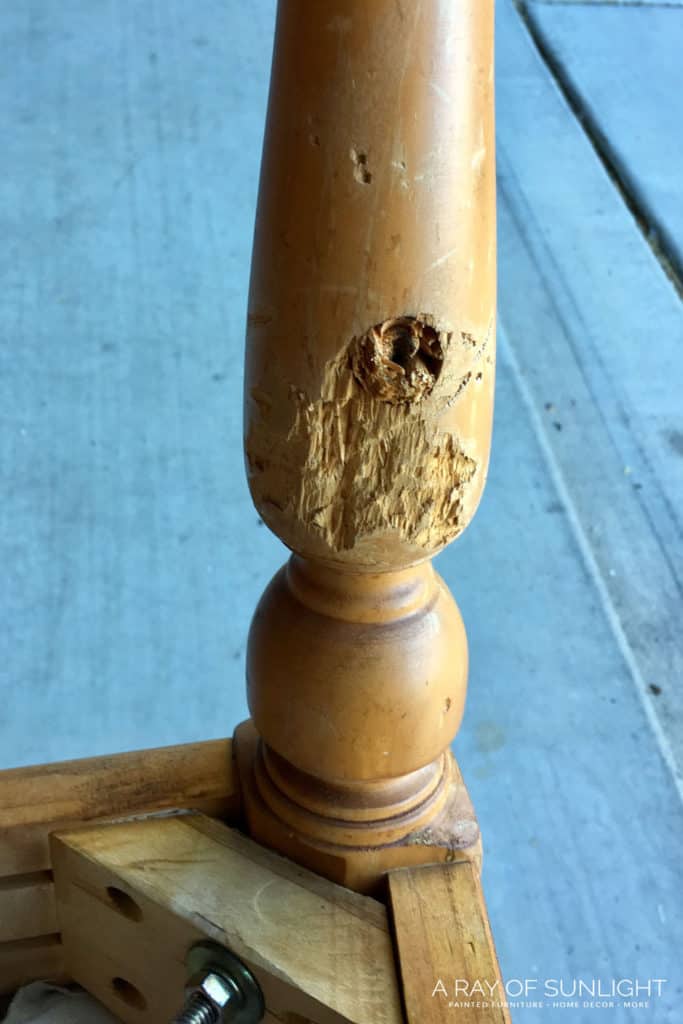
Some easy furniture repairs to fix are:
- Repair chewed up furniture or large holes – Repair Damaged Furniture
- Sand down the sides of drawers and doors to make them slide in and out easier – How To Fix Old Dresser Drawers That Stick
- Repair broken trim – How to Repair Broken Trim on Furniture
- Fix broken drawers – How To Fix A Broken Dresser Drawer
- Fill in old hardware holes with wood filler or my fav Kwikwood – Filling Holes When Replacing Cabinet Or Furniture Hardware
4) Not Preventing Bleedthrough BEFORE Painting
Bleedthrough is a major problem in the furniture painting world.
It shows up in the form of red, orange, or yellow stains that can show up at any time. Typically at the worst time, when you think you’re completely done with your project. Booooooo!
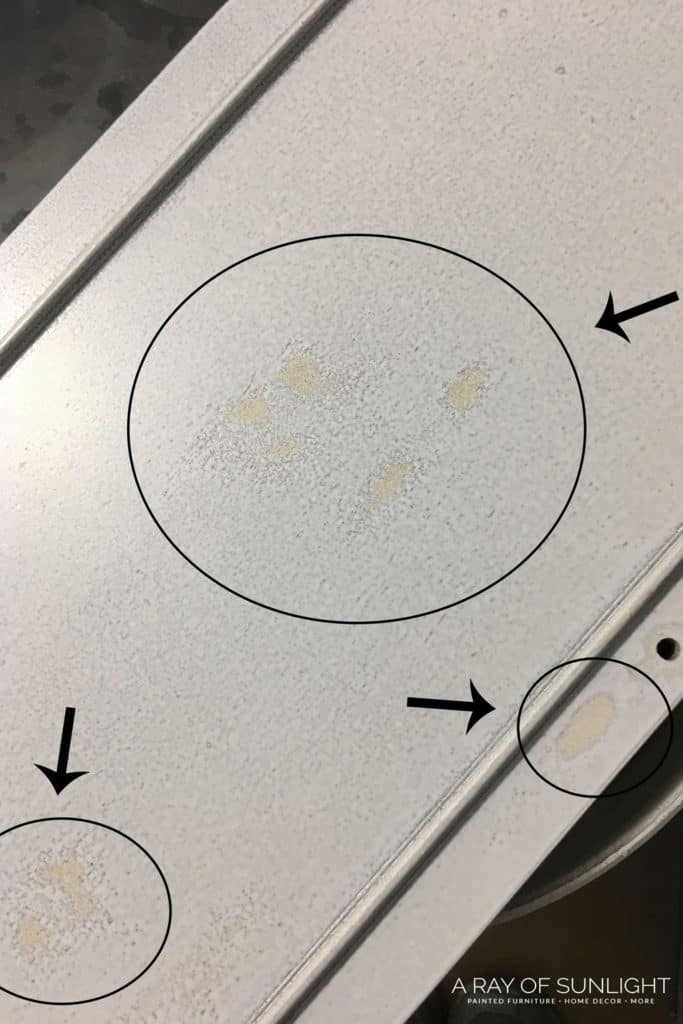
Bleedthrough is caused by tannins in wood. As they are exposed to water-based products they show up and stain right through your paint. They are the very worst on lightly colored paint because you can see the stains easier, but it happens no matter the paint color.
And sometimes you won’t see any bleeding until you put a water-based poly topcoat on top of the chalk paint. (See mistake 2).
How to Prevent Bleed Through When Painting
There is good news though! BIN shellac based primer and clear shellac can block bleedthrough from showing up! I love the spray paint cans for easy painting!
BIN shellac-based primer is a white-tinted primer, so it’s best for light colors or if you don’t want to distress your furniture.
Clear shellac is best for dark colors that you want to distress so the wood underneath will show through the paint.
Read this post for more details on how to stop stains from coming through paint, as well as how to fix paint bleed through after you have already painted.
3) Not Watching out for Paint Drips or Sags while the Paint is Drying
The more paint you put on, the more likely it is for your paint to start to drip down the sides of the furniture.
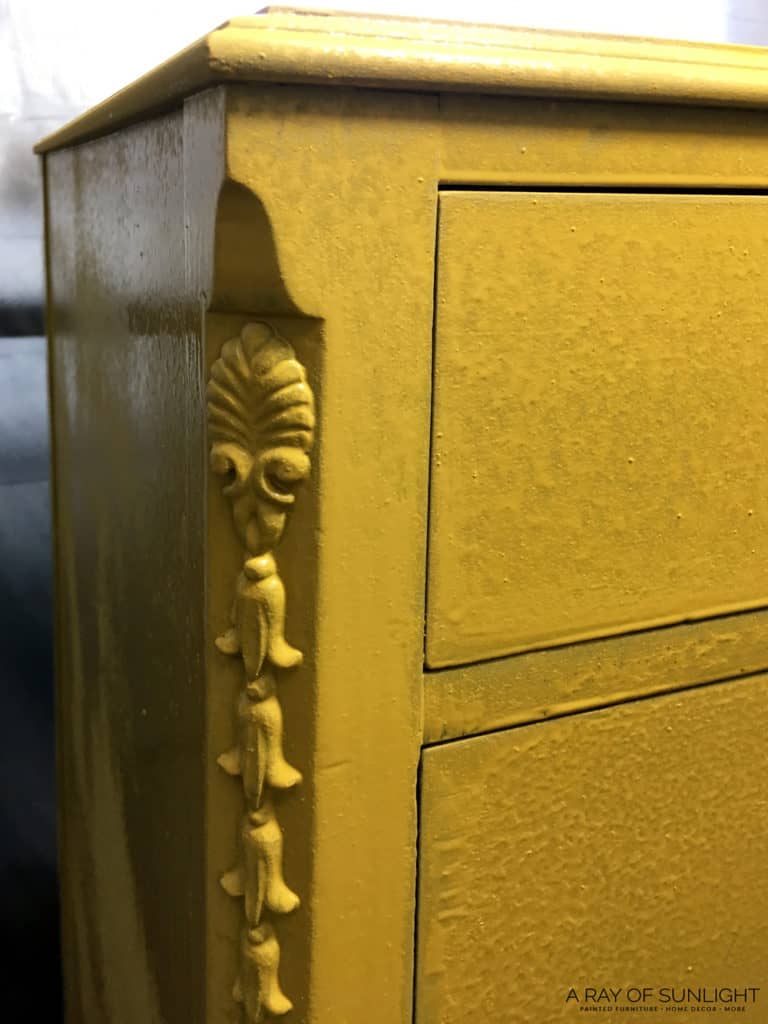
How to Fix Paint Drips
To prevent and fix paint drips, don’t load your brush up with too much paint. Be sure to brush some of the paint off of the brush and back into the can before moving it over to your furniture.
When working with edges, start on the inside and then paint to the outside edge. If you brush in the opposite direction it’s more likely for the paint to drip down the sides.
Then keep an eye on any vertical surfaces for drips or sagging paint. If you see any paint starting to drip, simply brush it away with your paintbrush.
If you don’t notice the drip until it has dried, simply sand the drip down with 220 grit sandpaper and paint that area again, making sure to not let it drip.
Painting in thin coats is also recommended for the best adhesion.
2) Not Topcoating the Paint for extra durability
Of course, this isn’t for every single paint out there. But most DIY paints need a topcoat.
For example, chalk style paint is super porous and definitely needs a topcoat if you want to be able to wipe dirt and grime off of the paint.
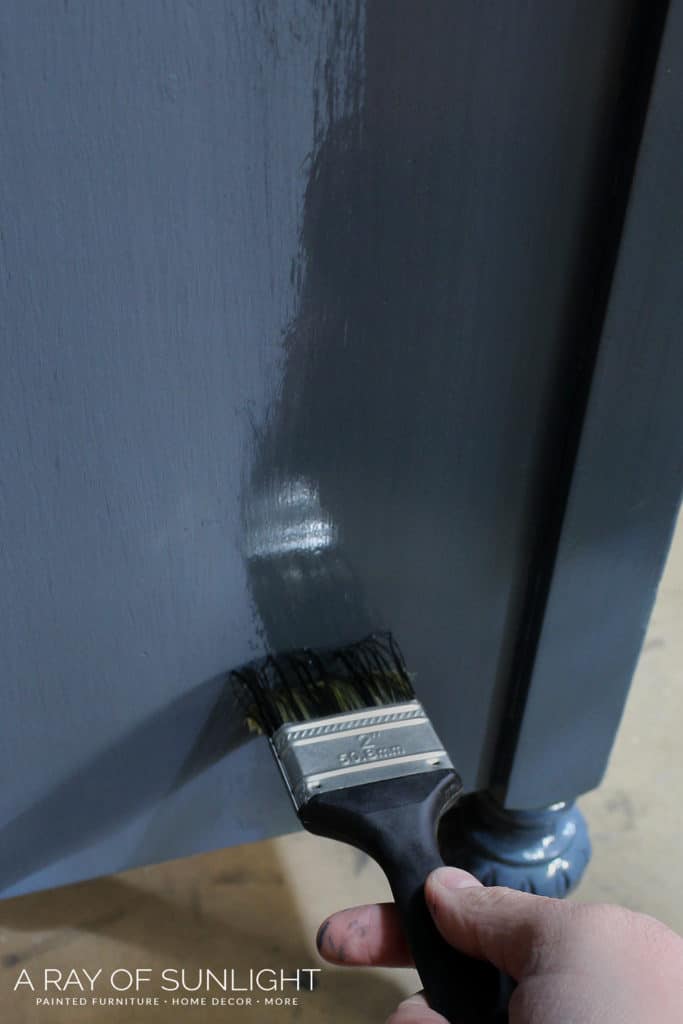
How to Fix Polyurethane Mistakes
My very favorite topcoat and the most durable topcoat for painted furniture is water-based polyurethane. It will give your paint added protection from scratching off, and it will also help with any spills.
You can brush it on, or spray it on with a paint sprayer. The easiest (and best-looking) way is to spray it on, but if you don’t have that option, you can always brush it on.
Here’s more about painting furniture with a sprayer.
Just beware that if you brush it on, it can look uneven and streaky.
The best way to prevent streaky-looking poly is to only touch it once (maybe twice) while applying it. Use long brush strokes and lay it on as evenly as possible.
This video from Country Chic Paint has great tips on how to seal furniture with clear coat.
Do not use oil-based poly over lighter colored paint. The oil-based poly has a yellow tint to it, and will make your paint have a yellow tint as well. You can use oil-based poly over dark colors to add richness though.
Polyurethane will not prevent scratching if you didn’t prep your furniture correctly though. Learn more about what’s the best polyurethane for furniture here.
* Note: Some paints might not mix well with a top coat. These are more of the enamel-style paints that are very durable without a topcoat. If top coated, the polyurethane may crack. (Ex. Benjamin Moore Advance or Sherwin Williams Emerald Urethane Trim and Door Enamel)
1) Not Prepping Furniture for Paint
This is the biggest mistake I see! Sure, it sounds nice to get that paint onto the furniture, but you could be making more work for yourself once that paint dries.
Prepping furniture really shouldn’t take more than 30 minutes for a dresser, but it will pay you back in years of extra durability.
Most furniture has a nice smooth or shiny finish to it, so if it’s not prepped the paint can peel off or even scratch off very easily. That would leave you with a huge mess to remove the paint and start all over, or it would leave you with a paint finish that will quickly deteriorate.
You need to give the paint something to hold onto, especially when your furniture is shiny and slick. Especially laminate or plastic-y types of manufactured furniture.
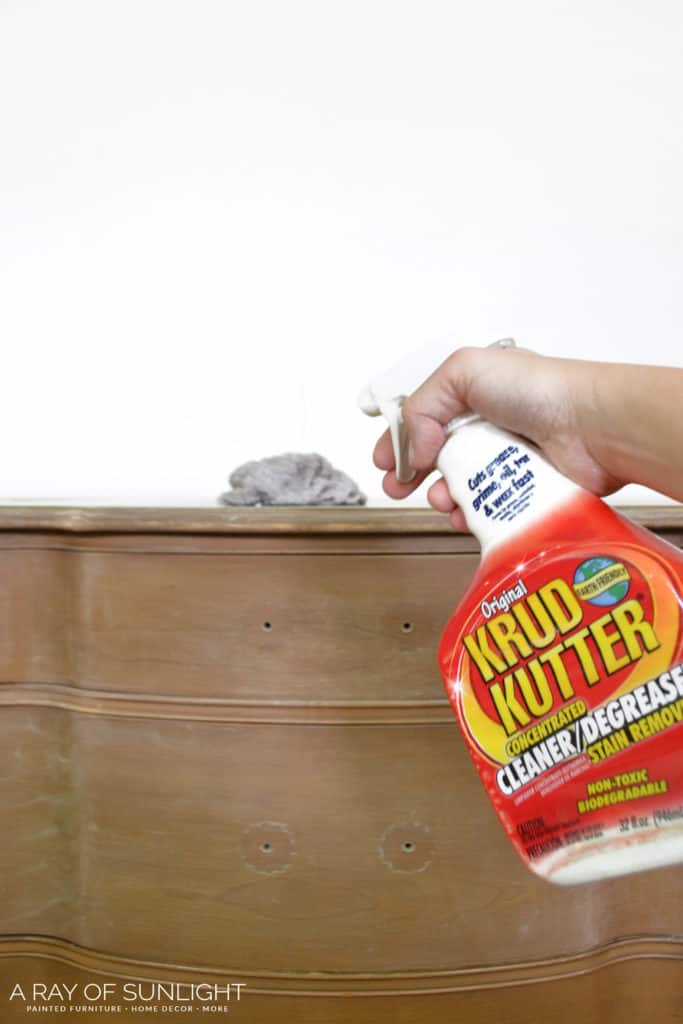
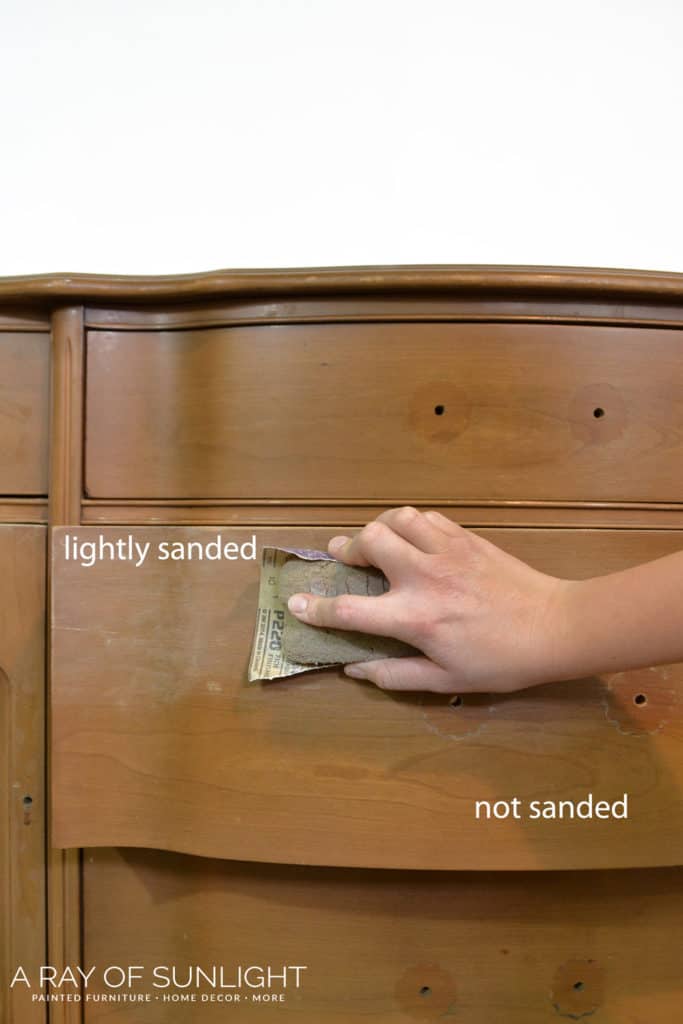
How to Prep Furniture for Painting
Thankfully it’s super simple to prep furniture for paint! Actually, it’s as easy as 1-2-3.
- Clean off dirt and grime with a degreaser like Krud Kutter.
- Scuff sand with 220 grit sandpaper. This only involves rubbing the sandpaper back and forth a few times across the entire surface. You don’t need to remove the old finish back down to raw wood! Just scuff up the old finish enough for the new paint to hold onto.
- Remove the dust with a vacuum hose and brush attachment and a lint-free rag. Tack cloths are perfect for this because they don’t leave any lint behind and they pick up dust so well.
- Optional: If you’re working with laminate or plastic-type furniture, it’s always best to prime before painting. But not with just any ole primer. You need a primer that will stick to laminate. So the paint and primer in one product and the stain-blocking primers won’t work for this. Here’s the best bonding primer for laminate furniture.
Learn more about how to clean furniture before painting here and the importance of sanding before painting furniture here.
That’s how to prevent making the biggest mistakes while painting furniture! Learn more about how to paint furniture so your paint finish lasts! Happy painting!
More Painting Furniture Resources
- Best Sandpaper for Furniture Painting
- Furniture Painting Tools And Supplies
- Painted Furniture Colors
- Best Paint Brushes for Painting Furniture
- Best Primers for Painting Furniture
Follow us on YouTube to get more tips for painting furniture.
Or share your project with us on our Facebook Group and be part of our community. See you there!
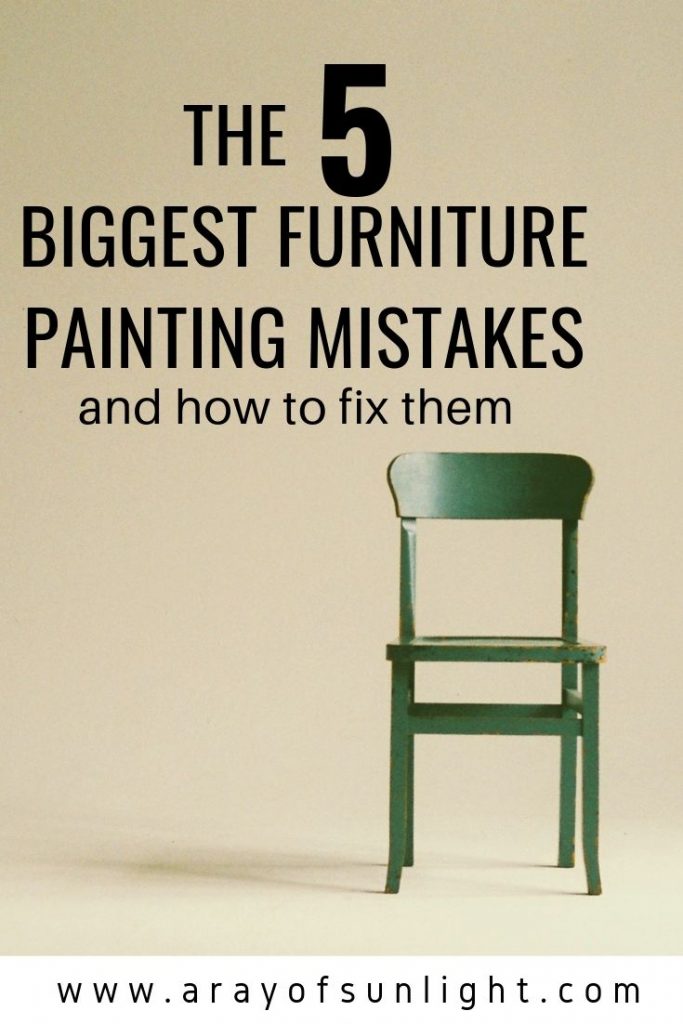

These are great tips!
Thank you so much!
Have you done any bathroom vanities
I haven’t yet. Well, I helped my sister haha but I haven’t done it all by myself.
Your posts are incredibly helpful! You’ve given me the confidence to start a new hobby. Thank you so much!!!
Your advice Is the Bestest! Thank you!!
Great tips. I gave repaired broken parts with bondos or Pollifilla but not by making a mold. This is genius. Thankyou
Excellent tips! Thanks so much for sharing your fire-tested knowledge!